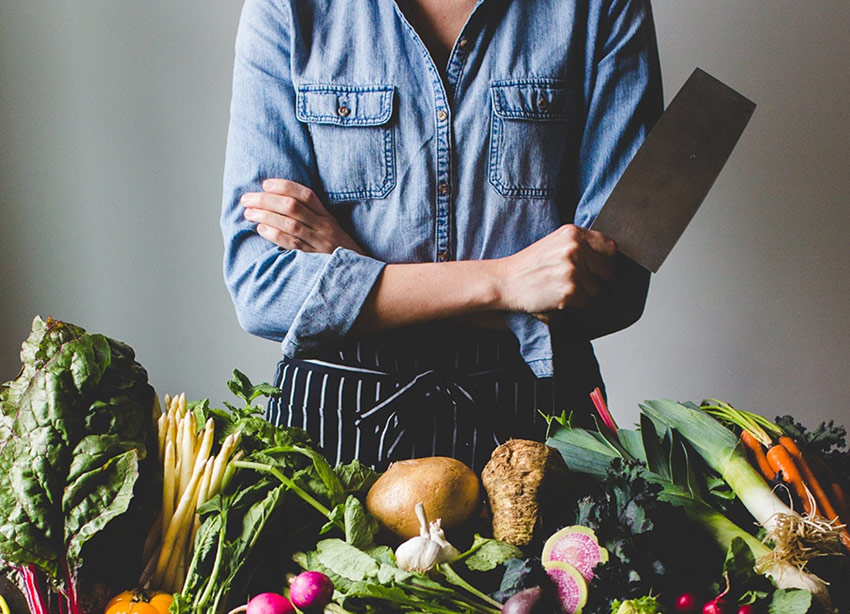The following is a blog post written by our Registered Dietitian, Allison Dunaway. Enjoy!
When temperatures begin to drop, it officially ushers in soup season! Not only is soup the ultimate comfort food, it is also the perfect dish to incorporate multiple cancer fighting foods. This is good news, especially for the person in treatment!
Since the cancer fighting eating plan recommends filling around two-thirds of your plate with whole plant foods, a perfect way to do this is by consuming a soup loaded with vegetables.
The very nature of using heat when preparing a soup allows for the vitamins and minerals to become easier for the body to digest. I like to think of these vitamins and minerals as batteries for you cells. In addition, these plant foods also contain powerful plant nutrients called phytochemicals.
I want to showcase 6 cancer fighting foods that work well in most soups.
Garlic – contains multiple health promoting compounds – allicin (which is released when crushed), quercetin, and inulin. Garlic has anti-inflammatory, anti-microbial, and antibacterial properties The American Institute of Cancer Research states “Lab studies show that garlic compounds help with DNA repair, slow the growth of cancer cells and decrease inflammation”.
Culinary Tip: Since allicin content increases after it has been crushed, it is best to wait 5-10 minutes after crushing it before adding it to you dish.
Tomatoes – are rich in Vitamin C, beta-carotene and lycopene which makes it a powerful antioxidant.
Culinary Tip: Both cooking tomatoes and consuming with a healthy fat (olive oil) can improve the absorption of lycopene making more available to the body.
Broccoli and Cauliflower are members of the cruciferous vegetables – known for their detoxing, anti-inflammatory, and possibly slowing cancer growth.
Culinary Tip: An immersion blender can be used to partly or completely puree a soup, allowing for more further concentrating the vegetables. It also creates a creamy consistency.
Kale: The superstar leafy – not only does it contain a remarkable source of Vitamin K, A, and C, but also multiple flavonoids (phytochemicals) and is another member of the cruciferous vegetable family. According to George Mateljan Foundation’s World Healthiest Foods website, “research studies on five specific types of cancer—including bladder cancer, breast cancer, colon cancer, ovarian cancer, and prostate cancer—and intake of cruciferous vegetables (specifically including kale). As a group, these studies definitely show cancer preventive benefits from kale intake, and in some cases, treatment benefits as well.”
Culinary Tip: Stir in 1 -2 handful of Kale towards the end of cooking. It will wilt and become a tasty part of the soup.
Parsley – Loaded in Vitamin K and C, has antioxidant and anti-inflammatory properties. Contains apigenin which has shown promising cancer fighting properties.
Culinary Tip: In general fresh herbs are best added at the end of cooking. Dried herbs, on the other hand, should be added earlier and require some cooking to enhance their flavor.
In addition to the nourishing attributes we have all experienced the wonderful aroma a pot of soup. Happy soup making!
The American Institute of Cancer Research is a great resource and you can learn more about cancer fighting foods here: https://www.aicr.org/foods-that-fight-cancer/

